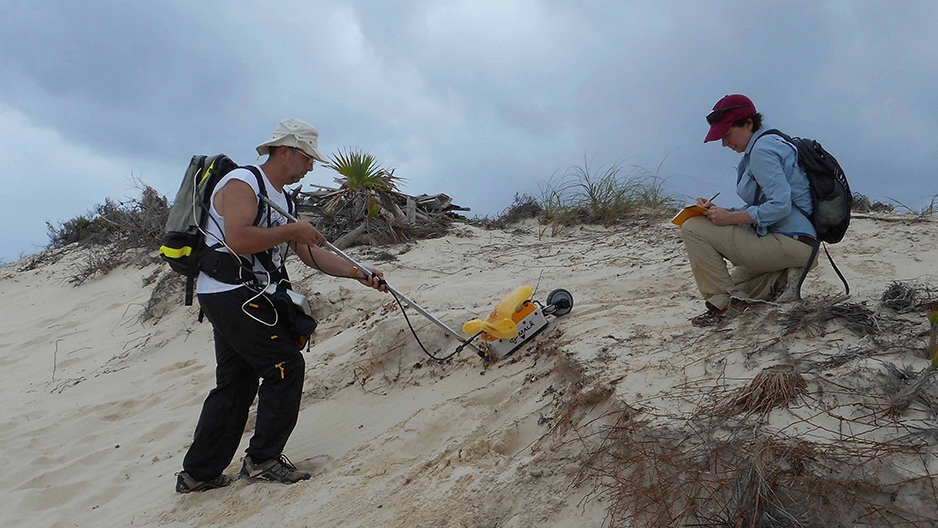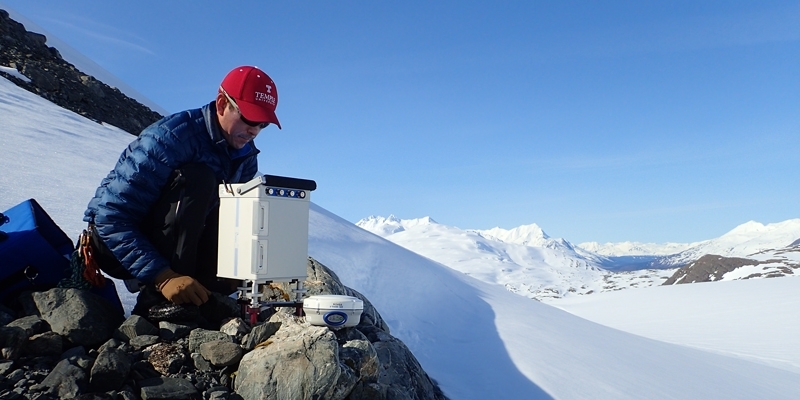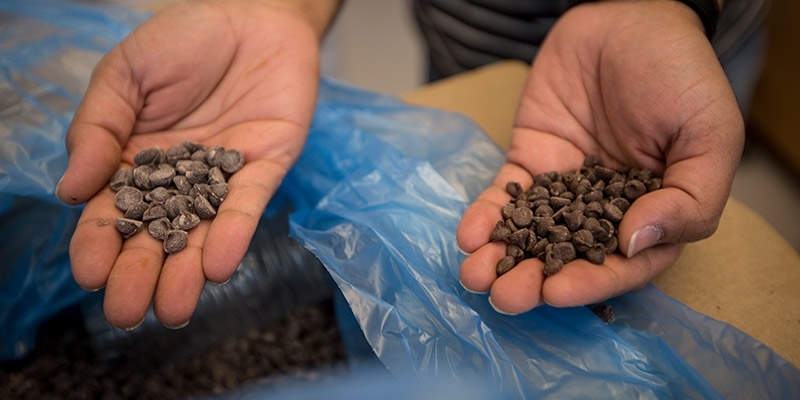A better dig
Ilya Buynevich, associate professor in the Department of Earth & Environmental Science, has used georadar to conduct surveys of land in the Bahamas.

In the hands of Ilya Buynevich, associate professor in the Department of Earth & Environmental Science, geology isn’t just about rocks and sand.
Working in the Bahamas with researchers from Miami University of Ohio, the University of Connecticut and Smith College, Buynevich is using ground-penetrating radar (“georadar”) to help his research colleagues locate a wide range of subsurface features—from archeological sites that date from Columbus’s first landfall in the Americas in 1492 to evidence of centuries of storm surges and the underground burrows of large blue land crabs.
Buynevich has been conducting his georadar surveys in the Bahamas yearly since 2013. The last two years he has focused on the island of San Salvador, where Columbus first landed—and where some of the heaviest storm damage occurred as a result of last fall’s Category 4 Hurricane Joaquin.
Besides assessing storm erosion, the rapid-response team was able to image ancient dunes and shorelines. This has helped archeologists better determine where the Lucayans—the natives present when Columbus arrived—lived, both then and as far back as a thousand years ago. Because the radar distinguishes between undisturbed and disturbed subsurfaces, it has led archeologists to graves, hearths and charcoal, as well as to potsherds--broken pieces of ceramic material--directly detected by the radar.
“By giving the archeologists a good idea regarding how wide or deep they should dig, I can help them better plan their excavations,” said Buynevich.
“We tried to use a 25-pound bag of plaster to make a cast of one burrow and it was so huge that we would have needed two bags,” said Kopcznski, whose research is being funded by the American Chemical Society Petroleum Research Fund – New Directions and the Geological Society of America. “And the number of burrows close to each other is also rather amazing.” One 2.5-meter by 2.5-meter transect they probed with radar held a total of 12 currently used and abandoned burrows.
At first glance, Buynevich concedes that these various investigations might seem separate. “But they really are connected,” he said. “The blue crabs excavate Lucayan artifacts, so locating their burrows can help archeologists find new cultural sites.
“Also, their burrows may preserve some sand from the early storm surges, which otherwise might get eroded from the surface. And because these crabs need at least a little water in the bottom of their burrows, they are emerging as good sea-level indicators. So if we eventually are able to find ancient burrows, we would be able to reconstruct ancient sea levels.”
—Bruce E. Beans


